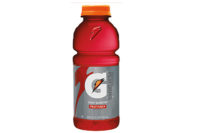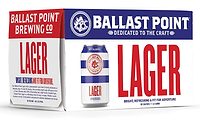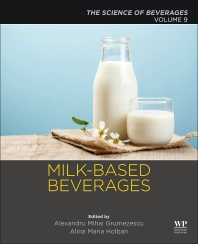Competitive spirit spurs new formats
Larger retailers get creative to compete for market share


|
| Wal-Mart has identified a number of potential smaller format Walmart Neighborhood Market store opportunities and plans to open between 80 and 100 reduced size formats in the United States next year |
As non-traditional grocery retailers see more competition from dollar store formats and wholesale club stores, mass merchandisers and supercenters are enlisting new ways to grow their consumer bases.
According to Barrington, Ill.-based Willard Bishop’s June 2011 report “The Future of Food Retailing,” supercenter sales grew 6.3 percent in 2010, with store counts increasing 4.1 percent and market share up 0.3 percent to 17 percent. During that same time period, mass merchandise sales increased 6.1 percent and market share increased from 0.1 percent to 4.4 percent.
In comparison, wholesale club store sales increased 8.2 percent, making up 8.3 percent of the retail food industry, and dollar store sales increased 8.8 percent with a market share of 2.1 percent, Willard Bishop’s report states.
The market research company predicts supercenters will continue sales growth at a rate of 5.9 percent a year going into 2015, increasing market share to 20.3 percent within that time. However, annual sales at mass merchandise formats are predicted to decrease 7 percent a year into 2015, resulting in a 2.7 percent market share, as more conventional mass merchandise stores are converted into supercenters, the report says.
The notion of value in retail channels has helped create more competition among the retailers in the non-traditional grocery segment.
“In the past, mass [merchandise stores] and super[centers] have done very well competing on everyday low price strategy, and during the course of the downturn and the recession we’ve really seen retailers across channels embracing everyday low price strategy, so it is not really the distinctive competitancy that it used to be for mass and supercenter channels,” says Susan Viamari, editor of Times & Trends magazine for Chicago-based SymphonyIRI Group. “In fact, consumers aren’t always necessarily looking for the lowest price, but the best value.”
Viamari adds that consumers are looking at a return on investment, assortment and product attributes, which can be applied to the beverage industry.
“Beverages specifically are performing the best within the grocery channel and the club channel,” she says. “They’re also doing very well in dollar [stores].”
Overall, beverage unit sales increased 2 percent in the last year, Viamari says, but decreased 1.1 percent at mass merchandise stores and were down 5.6 percent in supercenter formats.
New strategies
As consumer behavior patterns showcase more fill-in trips as compared to the pantry stocking trips that can be associated with mass merchandise stores and supercenters, analysts are keeping an eye on a shift to smaller format stores such as those introduced by mass merchandise retailers in more urban locations.
“Target has opened several of the CityTarget formats; Walmart and Meijer also have smaller format stores that they’re locating closer to and within urban environments,” Viamari says. “This potentially is going to be huge, but that being said these retailers are being challenged by the fact that they’re used to defining assortment in a much, much larger environment, so they need to get the right assortment, if you will, into a much smaller space versus the norm.”
Target recently announced that it will open a CityTarget in Westwood, Calif., in June 2012. The Westwood location is the second CityTarget store confirmed in the Los Angeles metropolitan area. Target previously announced that it would open a small-format, urban store in downtown Los Angeles in October 2012. In addition to the two Los Angeles-area CityTarget stores, Target will open small-format stores in Chicago, Seattle and San Francisco in 2012.
Family-owned retailer Meijer, Grand Rapids, Mich., recently announced an addition to the smaller format with its Meijer Marketplace. At 96,000 square feet, Meijer Marketplace will be about half the size of Meijer’s largest supercenters. Meijer planners have worked to ensure the store has the benefits of the larger Meijer stores, in essence offering a “mini” supercenter concept that provides consumers with a tailored grocery offering and a broad variety of general merchandise items, the company says.
Also appealing to the urban environment, Wal-Mart Stores Inc.’s Walmart U.S. offers the Neighborhood Markets and Walmart Express formats. “We have identified a large number of potential Neighborhood Market opportunities, and we plan to open between 80 and 100 medium to small formats next year,” said Bill Simon, Walmart U.S. president and chief executive officer, in a statement.
In the United States, Wal-Mart is evaluating the success of its Express formats. The company currently has five Walmart Express stores in operation and plans to add six more before the end of the fiscal year, according to the retailer.
“The rollout of Walmart Express is predicated on the review of our pilot program and the opportunity to build greater scale in a particular market,” Simon said. “We will continue to pursue a balanced approach to market share growth in low, medium and higher share markets. In addition, we continue to reduce the cost and scope of our remodel program to increase efficiency and to minimize customer disruption.”
Chicago-based Euromonitor’s Retailing Industry Analyst Raphael Moreau anticipates the smaller formats to be a focus going forward for Wal-Mart in the United States. “In the U.S., Wal-Mart will increasingly focus on opening small Walmart Express and Walmart Neighborhood Market stores, following the launch of Walmart Express, in an attempt to compete more directly against dollar stores and drug stores,” he says. “However, smaller stores may struggle to maintain margins against dollar stores, and Family Dollar plans to accelerate expansion with between 450 and 500 new outlets in 2012.”
SymphonyIRI’s Viamari is following where the smaller formats could lead for the mass merchandise stores and supercenters. “I’m very interested to see how that shakes out … it has the potential, but it’s a matter of doing it right and really doing it with the consumer in the center of it all.”
In addition to the launch of smaller formats, Moreau says Wal-Mart has renewed its focus on the everyday low price positioning, which he says should help the company. “Wal-Mart is expected to improve its performance due to refocus on [everyday low price] and the recent reintroduction of de-listed brands,” he says. “However, Wal-Mart will continue struggling to appeal to disgruntled customers who have left the retailer for rivals as they no longer found their favorite brands.”
Moreau adds that Target took another approach with its pricing as it began offering exclusive ranges aimed at higher-income shoppers, which generated higher traffic and sales while improving the brand’s image.
Fueling growth
As mass merchandise stores and supercenters look for ways to remain competitive and gain an advantage in market share, analysts note that beverages could play an important role.
“As one of the most broadly purchased and fastest turning groups of products, [beverages] are critical to driving traffic,” says Jim Hertel, managing partner with Willard Bishop. “If the mass channel becomes ‘known for’ beverages, it can drive competitive advantage; ‘known for’ means having unbeaten pricing and variety, never being out-of-stock and first to market with new items.”
Hertel adds that this same strategy can be adopted by supercenters.
SymphonyIRI’s Viamari says that consumers’ “at-home eating” versus “away-from-home eating” habits are reducing spending and that beverages can play an important role in an uptick. For example, having friends over for drinks compared to purchasing drinks at a bar. In addition to in-home beverage consumption, Viamari says it will be important for mass merchandise and supercenter retailers, as well as beverage manufacturers that serve those sectors, to tailor product assortment, package messaging and promotions to home-centric habits.
“[It’s] really honing assortment and messaging at a micro level because this ‘one size fits all’ strategy of assortment isn’t going to work — especially as mass merchandisers and supercenters are trying to move to more urban environments, they need to be tailoring their assortment at a much more micro level than they have in the past,” she says. “Rather than being outside where people are coming in from all directions, when you’re in a more urban environment, it’s a more homogenous group of people, so you need to target all of that much more effectively.” BI
Looking for a reprint of this article?
From high-res PDFs to custom plaques, order your copy today!








